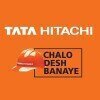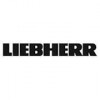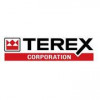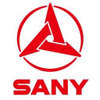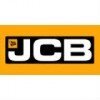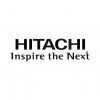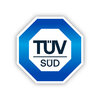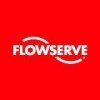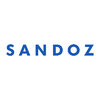132 Caterpillar Inc Jobs
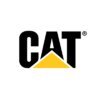
Quality Manager
Caterpillar Inc
posted 13hr ago
Job Role Insights
Flexible timing
Key skills for the job
Job Description
Career Area:
Manufacturing Job Description:
Your Work Shapes the World at Caterpillar Inc.
When you join Caterpillar, youre joining a global team who cares not just about the work we do - but also about each other. We are the makers, problem solvers, and future world builders who are creating stronger, more sustainable communities. We dont just talk about progress and innovation here - we make it happen, with our customers, where we work and live. Together, we are building a better world, so we can all enjoy living in it.
Role Definition
Oversees the administration and continual improvement of quality management systems.
Responsibilities
Supporting development of quality assurance strategies, processes, guidelines and control plans which assure quality and reliability of manufactured products.
Leading the development and implementation of corrective action and preventive measures to achieve quality targets.
Investigating and addressing trends with internal and external non-conformance.
Leading, managing and developing multiple teams, team leaders, quality specialists and inspectors to assure that quality standards are met.
Driving change based on data; reviewing reports to review with quality assurance, production, management, and engineering personnel to solve quality issues.
Degree Requirement
Degree or equivalent experience desired
Skill Descriptors
Planning: Tactical, Strategic: Knowledge of effective planning techniques and ability to contribute to operational (short term), tactical (1-2 years) and strategic (3-5 years) planning in support of the overall business plan.
Level Working Knowledge:
Contributes to short-term operational plans.
Anticipates and adapts to plan changes.
Monitors progress of work against plan as required to meet objectives.
Reports variances and makes agreed-upon corrections.
Under guidance, develops tactical plan for own direct responsibility.
Quality Management: Knowledge of quality management methods, tools, and techniques and ability to create and support an environment that meets the quality goals of the organization.
Level Extensive Experience:
Interprets results of quantitative and statistical tools and explains results to others.
Communicates key benefits of a quality management process.
Conducts and directs quality reviews.
Develops expertise in quality assurance tools, techniques, and standards.
Develops quality assurance processes based on Six Sigma, ISO 9000 or Baldrige principles.
Develops programs for motivating employees to meet or exceed quality goals.
Collaborating: Knowledge of collaborative techniques; ability to work with a variety of individuals and groups in a constructive and collaborative manner.
Level Extensive Experience:
Demonstrates experience engendering collaborative processes that lead to problem solving and the achievement of business goals.
Establishes shared goals to foster collaboration.
Ensures that everyone can access the same data and provide input into how business is conducted.
Redesigns physical areas to allow for collaboration and private time.
Deemphasizes divides; focuses on collaboration across generations, functions, regions, and levels.
Implements methods for people to come together on the fly to make decisions, solve problems, and develop products/services.
Influencing: Knowledge of effective influencing tactics and strategies; ability to impact decisions within and outside own organization.
Caterpillar: Confidential Green
Level Working Knowledge:
Develops basic persuasive arguments.
Discusses organizational culture around providing input on decisions.
Uses active listening skills and probing techniques to surface opportunities to influence.
Identifies who the decision makers are and how they receive information.
Regularly presents ideas or suggestions to associates in persuasive terms.
Problem Solving: Knowledge of approaches, tools, techniques for recognizing, anticipating, and resolving organizational, operational or process problems; ability to apply knowledge of problem solving appropriately to diverse situations.
Level Working Knowledge:
Identifies and documents specific problems and resolution alternatives.
Examines a specific problem and understands the perspective of each involved stakeholder.
Develops alternative techniques for assessing accuracy and relevance of information.
Helps to analyze risks and benefits of alternative approaches and obtain decision on resolution.
Uses fact-finding techniques and diagnostic tools to identify problems.
Quality Risk Management: Knowledge of processes, tools, and techniques for Quality Risk Management; ability to implement the quality assurance process of assessment, control, communication, and review of risks to the quality of products.
Level Working Knowledge:
Documents the key steps of a unit-specific risk management process and associated procedures.
Explains and analyzes quality indicators and metrics relevant to own unit or function.
Highlights Quality Risk Management issues throughout the product life cycle.
Participates in a crisis management team to address quality issues.
Understands overall business objectives to effectively mitigate risks associated with quality.
Lean Manufacturing: Knowledge of the philosophy, principles and implementation approaches of lean manufacturing; ability to integrate and implement lean manufacturing philosophy into existing production and management processes.
Level Basic Understanding:
Cites examples of benefits and risks associated with implementing lean principles.
Describes basic tools for observing existing processes and identifying waste.
Cites industry or company examples of successful and unsuccessful lean implementations.
Identifies key lean principles and highlights of the lean manufacturing process.
Root Cause Analysis (RCA): Knowledge of the concepts, principles and techniques of root cause analysis (RCA); ability to use a structured approach to identify the causes of undesirable consequences in a manufacturing environment and the changes needed to prevent recurrences.
Level Working Knowledge:
Utilizes RCA techniques, such as Flowchart, Fish-bone Diagram, etc., to investigate basic problems, determine the causes, and find resolutions.
Locates factors that resulted in harmful outcomes of one or more past events.
Pinpoints behaviors, actions, inaction, or conditions that need to be changed.
Extrapolates lessons to be learned to promote the achievement of better consequences.
Practices RCA as an iterative process
Oversees the administration and continual improvement of quality management systems.
Responsibilities
Supporting development of quality assurance strategies, processes, guidelines and control plans which assure quality and reliability of manufactured products.
Leading the development and implementation of corrective action and preventive measures to achieve quality targets.
Investigating and addressing trends with internal and external non-conformance.
Leading, managing and developing multiple teams, team leaders, quality specialists and inspectors to assure that quality standards are met.
Driving change based on data; reviewing reports to review with quality assurance, production, management, and engineering personnel to solve quality issues.
Degree Requirement
Degree or equivalent experience desired
Skill Descriptors
Planning: Tactical, Strategic: Knowledge of effective planning techniques and ability to contribute to operational (short term), tactical (1-2 years) and strategic (3-5 years) planning in support of the overall business plan.
Level Working Knowledge:
Contributes to short-term operational plans.
Anticipates and adapts to plan changes.
Monitors progress of work against plan as required to meet objectives.
Reports variances and makes agreed-upon corrections.
Under guidance, develops tactical plan for own direct responsibility.
Quality Management: Knowledge of quality management methods, tools, and techniques and ability to create and support an environment that meets the quality goals of the organization.
Level Extensive Experience:
Interprets results of quantitative and statistical tools and explains results to others.
Communicates key benefits of a quality management process.
Conducts and directs quality reviews.
Develops expertise in quality assurance tools, techniques, and standards.
Develops quality assurance processes based on Six Sigma, ISO 9000 or Baldrige principles.
Develops programs for motivating employees to meet or exceed quality goals.
Collaborating: Knowledge of collaborative techniques; ability to work with a variety of individuals and groups in a constructive and collaborative manner.
Level Extensive Experience:
Demonstrates experience engendering collaborative processes that lead to problem solving and the achievement of business goals.
Establishes shared goals to foster collaboration.
Ensures that everyone can access the same data and provide input into how business is conducted.
Redesigns physical areas to allow for collaboration and private time.
Deemphasizes divides; focuses on collaboration across generations, functions, regions, and levels.
Implements methods for people to come together on the fly to make decisions, solve problems, and develop products/services.
Influencing: Knowledge of effective influencing tactics and strategies; ability to impact decisions within and outside own organization.
Caterpillar: Confidential Green
Level Working Knowledge:
Develops basic persuasive arguments.
Discusses organizational culture around providing input on decisions.
Uses active listening skills and probing techniques to surface opportunities to influence.
Identifies who the decision makers are and how they receive information.
Regularly presents ideas or suggestions to associates in persuasive terms.
Problem Solving: Knowledge of approaches, tools, techniques for recognizing, anticipating, and resolving organizational, operational or process problems; ability to apply knowledge of problem solving appropriately to diverse situations.
Level Working Knowledge:
Identifies and documents specific problems and resolution alternatives.
Examines a specific problem and understands the perspective of each involved stakeholder.
Develops alternative techniques for assessing accuracy and relevance of information.
Helps to analyze risks and benefits of alternative approaches and obtain decision on resolution.
Uses fact-finding techniques and diagnostic tools to identify problems.
Quality Risk Management: Knowledge of processes, tools, and techniques for Quality Risk Management; ability to implement the quality assurance process of assessment, control, communication, and review of risks to the quality of products.
Level Working Knowledge:
Documents the key steps of a unit-specific risk management process and associated procedures.
Explains and analyzes quality indicators and metrics relevant to own unit or function.
Highlights Quality Risk Management issues throughout the product life cycle.
Participates in a crisis management team to address quality issues.
Understands overall business objectives to effectively mitigate risks associated with quality.
Lean Manufacturing: Knowledge of the philosophy, principles and implementation approaches of lean manufacturing; ability to integrate and implement lean manufacturing philosophy into existing production and management processes.
Level Basic Understanding:
Cites examples of benefits and risks associated with implementing lean principles.
Describes basic tools for observing existing processes and identifying waste.
Cites industry or company examples of successful and unsuccessful lean implementations.
Identifies key lean principles and highlights of the lean manufacturing process.
Root Cause Analysis (RCA): Knowledge of the concepts, principles and techniques of root cause analysis (RCA); ability to use a structured approach to identify the causes of undesirable consequences in a manufacturing environment and the changes needed to prevent recurrences.
Level Working Knowledge:
Utilizes RCA techniques, such as Flowchart, Fish-bone Diagram, etc., to investigate basic problems, determine the causes, and find resolutions.
Locates factors that resulted in harmful outcomes of one or more past events.
Pinpoints behaviors, actions, inaction, or conditions that need to be changed.
Extrapolates lessons to be learned to promote the achievement of better consequences.
Practices RCA as an iterative process
Posting Dates:
February 6, 2025 - February 20, 2025 Caterpillar is an Equal Opportunity Employer (EEO).
Not ready to applyJoin our Talent Community .
Employment Type: Full Time, Permanent
Read full job descriptionPrepare for Quality Manager roles with real interview advice
What people at Caterpillar Inc are saying
Quality Manager salary at Caterpillar Inc
reported by
19
employees
with 7-22
years exp.

₹9
L/yr - ₹28.6
L/yr
51%
more
than the average Quality Manager Salary in India
View more details
What Caterpillar Inc employees are saying about work life
based on 1.2k employees
Flexible timing
Monday to Friday
No travel
Day Shift
Similar Jobs for you
Caterpillar Inc Chennai Office Locations
Chennai Office
Caterpillar, IITM Research Park, Kangam Village, Tharamani
Chennai
Tamil Nadu 600113
Tamil Nadu 600113
Chennai Office
ASCENDAS
6th and 7th Floor,
International Technology Park,
Taramani Road
Chennai
Chennai
600 113
600 113
Share an Interview










